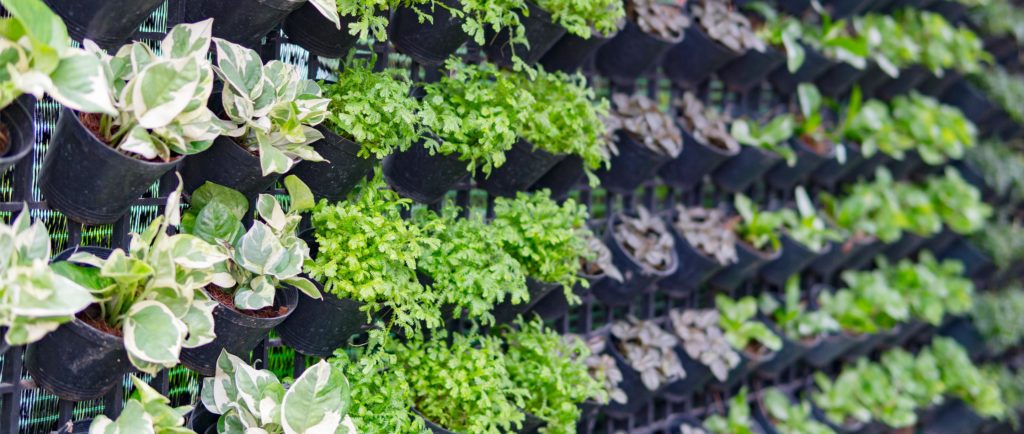
Grow Up! Vertical Gardens Are Here
While many people recognize the advantages to gardening, including the financial perks of growing one’s own produce, not everyone has the space for a polished backyard garden. Living in Nevada makes this extremely challenging, where outdoor space is rare or found at a high premium.
However, there is a simple solution to the space conundrum: vertical gardens.
Vertical gardens allow the growers to have an abundance of plants without an abundance of space, because flowers, fruits, vegetables, herbs and succulents are hung on walls instead of taking up space on the ground. Other benefits of vertical gardens versus traditional gardens include reduced water use, enhanced air exposure and reduced insect invasions. These vertically aligned plants turn bare walls into beautiful, living works of art that are also highly functional.
Aside from gardening’s health and visual advantages, people who grow their own fruits, vegetables and herbs can slim down their grocery bills. The average American home spends more than $750 a year on fruits and vegetables, but that same home can save hundreds of dollars per year by growing its own. Additionally, organic produce spoils quicker than nonorganic produce, so being able to harvest it as needed ensures that the produce is fresh and doesn’t go bad before its use.
How Are Vertical Gardens Set Up and Maintained?
For those who are crafty and enjoy DIY projects, building a vertical garden is a wonderful, rewarding experience. By reusing rope, chains, wood, boxes, baskets, lattice screens or other materials, creating a vertical garden can be a fun, inexpensive and environmentally friendly project that can be done alone or with loved ones. (If new materials have to be purchased, it still isn’t an expensive project.)
To get the creative juices flowing, here are 10 different ways to construct a vertical garden. Many resources on how to build a vertical garden can be found online. The only limit is imagination!
Creating a vertical garden can be a fun and inexpensive project to do alone or with family.

Here some important DIY vertical garden tips:
- Make sure the vertical garden is placed in a location with adequate sunlight and shade, depending on what plants are growing in it.
- Those who rent their homes should craft their vertical gardens in such a way that they can be easily removed and taken with them.
- The vertical garden shouldn’t be made higher than the grower’s arms can reach.
- Install some type of drip irrigation system.
- Choose a planting medium that holds air and water well so that the plants don’t dry out quickly.
- Plants that require more water should be located at the bottom of the vertical garden.
- Remember to place a reservoir under the vertical garden if there is a need to catch the excess water.
- More helpful tips can be found here.
For people who aren’t DIYers, there are several companies that sell already-created vertical produce gardens or vertical produce garden kits.
Lettuce Grow builds, fully manages and harvests vertical produce gardens for homes or businesses.
Tower Garden is a vertical produce system that includes everything needed to set up and maintain produce-yielding plants.
GreenStalk sells a variety of vertical garden planters and other equipment.
A small or nonexistent yard does not eliminate the ability to grow a beautiful garden. Vertical produce gardens give Nevada residents the opportunity to reap the many advantages of gardening, including physical health, mental health, emotional well-being, nutrition and financial benefits. With creativity and a little bit of elbow grease, one can build a vertical produce garden fit for an ancient pharaoh or emperor!






















